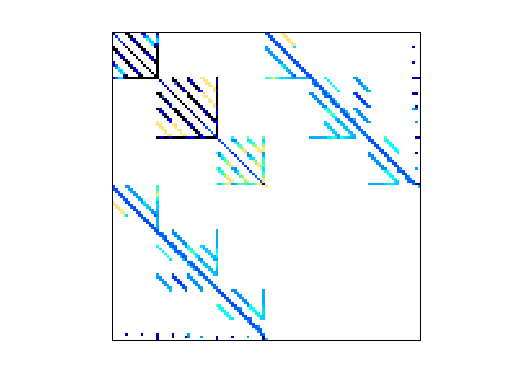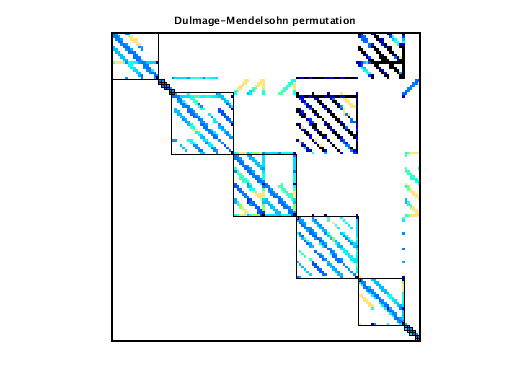VDOL/goddardRocketProblem_1
goddardRocketProblem optimal control problem (matrix 1 of 2)
| Name |
goddardRocketProblem_1 |
| Group |
VDOL |
| Matrix ID |
2689 |
|
Num Rows
|
831 |
|
Num Cols
|
831 |
|
Nonzeros
|
8,498 |
|
Pattern Entries
|
8,498 |
|
Kind
|
Optimal Control Problem |
|
Symmetric
|
Yes |
|
Date
|
2015 |
|
Author
|
B. Senses, A. Rao |
|
Editor
|
T. Davis |
| Structural Rank |
831 |
| Structural Rank Full |
true |
|
Num Dmperm Blocks
|
45 |
|
Strongly Connect Components
|
1 |
|
Num Explicit Zeros
|
0 |
|
Pattern Symmetry
|
100% |
|
Numeric Symmetry
|
100% |
|
Cholesky Candidate
|
no |
|
Positive Definite
|
no |
|
Type
|
real |
| Download |
MATLAB
Rutherford Boeing
Matrix Market
|
| Notes |
Optimal control problem, Vehicle Dynamics & Optimization Lab, UF
Anil Rao and Begum Senses, University of Florida
http://vdol.mae.ufl.edu
This matrix arises from an optimal control problem described below.
Each optimal control problem gives rise to a sequence of matrices of
different sizes when they are being solved inside GPOPS, an optimal
control solver created by Anil Rao, Begum Senses, and others at in VDOL
lab at the University of Florida. This is one of the matrices in one
of these problems. The matrix is symmetric indefinite.
Rao, Senses, and Davis have created a graph coarsening strategy
that matches pairs of nodes. The mapping is given for this matrix,
where map(i)=k means that node i in the original graph is mapped to
node k in the smaller graph. map(i)=map(j)=k means that both nodes
i and j are mapped to the same node k, and thus nodes i and j have
been merged.
This matrix consists of a set of nodes (rows/columns) and the
names of these rows/cols are given
Anil Rao, Begum Sense, and Tim Davis, 2015.
VDOL/goddardRocketProblem
Goddard rocket maximum ascent optimal control problem is taken from
Ref.~\cite{goddard1920method}. The goal of the Goddard rocket maximum
ascent problem is to determine the state and the control that
maximize the final altitude of an ascending rocket. The state of the
system is defined by the altitude, velocity, and the mass of the
rocket and the control of the system is the thrust. The Goddard
rocket problem contains a singular arc where the continuous-time
optimality conditions are indeterminate, thereby the nonlinear
programming problem solver will have difficulty determining the
optimal control during the singular arc. In order to prevent this
difficulty and obtain more accurate solutions the Goddard rocket
problem is posed as a three-phase optimal control problem. Phase one
and phase three contains the same dynamics and the path constraints
as the original problem, while phase two contains an additional path
constraint and an event constraint. The specified accuracy tolerance
of $10^{-8}$ were satisfied after two mesh iterations. As the mesh
refinement proceeds, the size of the KKT matrices increases from 831
to 867.
@article{goddard1920method,
title={A Method of Reaching Extreme Altitudes.},
author={Goddard, Robert H},
journal={Nature},
volume={105},
pages={809--811},
year={1920}
}
|


